Search
Search Results

Definition
Byzantine Emperor
The Byzantine Emperor ruled as an absolute monarch in an institution which lasted from the 4th to 15th century CE. Aided by ministers, high-ranking nobility, and key church figures, the emperor (and sometimes empress) was commander-in-chief...
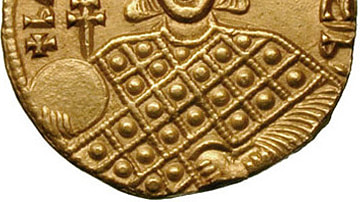
Definition
Basil I
Basil I was emperor of the Byzantine Empire from 867 to 886 CE and he founded the "Macedonian" dynasty which lasted for over 200 years. Basil was an Armenian from a humble background who had risen to become the second most powerful man in...
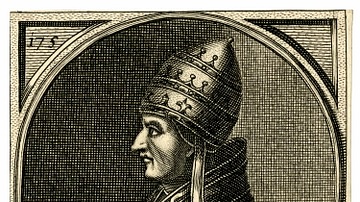
Image
Pope Innocent III
Pope Innocent III (not to be confused with anti-pope Innocent III), r. 1198-1216 CE, is depicted in this print from Chronologia Summorum Romanorum Pontificum, published in 1675 CE. The text at the bottom reads "Innocent III, ". Measures 120...

Definition
Frederick II
Frederick II (l. 1194-1250 CE) was the king of Sicily (r. 1198-1250 CE), Germany (r. 1215-1250 CE), Jerusalem (r. 1225-1228 CE), and also reigned supreme as the Holy Roman Emperor (r. 1220-1250 CE). He was born in Jesi in 1194 CE but spent...
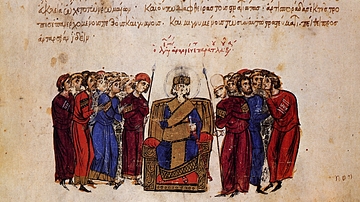
Image
Proclamation of Leo V the Armenian
An illustration from a 12th century CE manuscript depicting the proclamation of Leo V the Armenian, emperor of the Byzantine Empire from 813 to 820 CE. (Madrid Skylitzes, National Library, Madrid)

Definition
Charlemagne
Charlemagne (Charles the Great, also known as Charles I, l. 742-814) was King of the Franks (r. 768-814), King of the Franks and Lombards (r. 774-814), and Holy Roman Emperor (r. 800-814). He is among the best-known and most influential figures...

Article
Byzantine-Armenian Relations
The relationship between the Byzantine Empire and ancient Armenia was a constant and varied one with an equal mix of wars, occupations, treaties of friendship, mutual military aid, and cultural exchange. Regarded as a vital defence to the...

Image
Tiara of Pope Pius IX
The tiara of Pope Pius IX (in office 1846-1878). Made in 1854. Made of a trio of gold crowns set with diamonds, emeralds, sapphires, pearls, and other jewels around a silver-thread fabric. It measures 35 cm (13.7 in) in height and diameter...
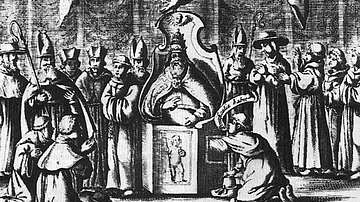
Image
Physical Examination of a New Pope
A 1645 illustration showing a cardinal checking that Pope Innocent X (in office 1644-55) is indeed a man.
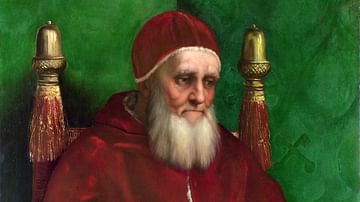
Image
Pope Julius II by Raphael
A portrait of Pope Julius II (r. 1503-1513 CE) by the Italian Renaissance artist Raphael, c. 1512 CE. (National Gallery London)